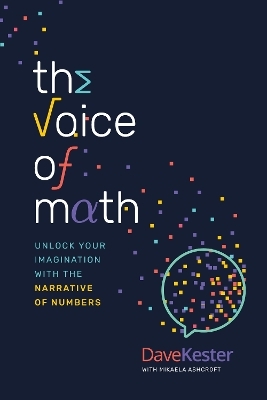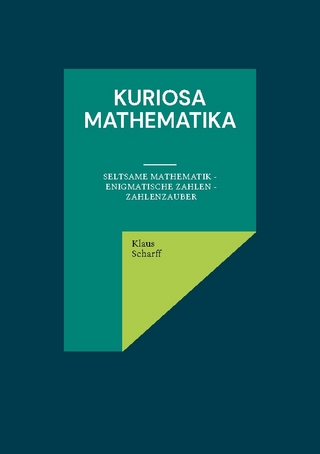
History of the Theory of Numbers, Volume 2
American Mathematical Society (Verlag)
978-0-8218-1938-8 (ISBN)
- Keine Verlagsinformationen verfügbar
- Artikel merken
Dickson's History is truly a monumental account of the development of one of the oldest and most important areas of mathematics. It is remarkable today to think that such a complete history could even be conceived. That Dickson was able to accomplish such a feat is attested to by the fact that his ""History"" has become the standard reference for number theory up to that time. One need only look at later classics, such as ""Hardy and Wright"", where ""Dickson's History"" is frequently cited, to see its importance. The book is divided into three volumes by topic.In scope, the coverage is encyclopedic, leaving very little out. It is interesting to see the topics being resuscitated today that are treated in detail in ""Dickson"". The first volume of ""Dickson's History"" covers the related topics of divisibility and primality. It begins with a description of the development of our understanding of perfect numbers. Other standard topics, such as Fermat's theorems, primitive roots, counting divisors, the Mobius function, and prime numbers themselves are treated."" Dickson"", in this thoroughness, also includes less workhorse subjects, such as methods of factoring, divisibility of factorials and properties of the digits of numbers. Concepts, results and citations are numerous. The second volume is a comprehensive treatment of Diophantine analysis. Besides the familiar cases of Diophantine equations, this rubric also covers partitions, representations as a sum of two, three, four or $n$ squares, Waring's problem in general and Hilbert's solution of it, and perfect squares in arithmetical and geometrical progressions.Of course, many important Diophantine equations, such as Pell's equation, and classes of equations, such as quadratic, cubic and quartic equations, are treated in detail. As usual with Dickson, the account is encyclopedic and the references are numerous. The last volume of ""Dickson's History"" is the most modern, covering quadratic and higher forms. The treatment here is more general than in Volume II, which, in a sense, is more concerned with special cases. Indeed, this volume chiefly presents methods of attacking whole classes of problems. Again, ""Dickson"" is exhaustive with references and citations.
Part 1, Divisibility and Primality: Perfect, multiply perfect, and amicable numbers Formulas for the number and sum of divisors, problems of Fermat and Wallis Fermat's and Wilson's theorems, generalizations and converses; symmetric functions of $1, 2, /dots, p-1$, modulo $p$ Residue of $(u^{p-1}-1)/p$ modulo $p$ Euler's $/phi$-function, generalizations; Farey series Periodic decimal fractions; periodic fractions; factors of $10^{n}/pm 1$ Primitive roots, exponents, indices, binomial congruences Higher congruences Divisibility of factorials and multinomial coefficients Sum and number of divisors Miscellaneous theorems on divisibility, greatest common divisor, least common multiple Criteria for divisibility by a given number Factor tables, lists of primes Methods of factoring Fermat numbers $F_{n}=2^{2^n}+1$ Factors of $a^{n}/pm b^{n}$ Recurring series; Lucas' $u_{n}, v_{n}$ Theory of prime numbers Inversion of functions; Mobius' function $/mu(n)$; numerical integrals and derivatives Properties of the digits of numbers Author index Subject index Part 2, Diophantine Analysis: Polygonal, pyramidal and figurate numbers Linear diophantine equations and congruences Partitions Rational right triangles Triangles, quadrilaterals, and tetrahedra Sum of two squares Sum of three squares Sum of four squares Sum of $n$ squares Number of solutions of quadratic congruences in $n$ unknowns Liouville's series of eighteen articles Pell equation; $ax^2 + bx +c$ made a square Further single equations of the second degree Squares in arithmetical or geometrical progression Two or more linear functions made squares Two quadratic functions of one or two unknowns made squares Systems of two equations of degree two Three or more quadratic functions of one or two unknowns made squares Systems of three or more equations of degree two in three or more unknowns Quadratic form made an $n$th power Equations of degree three Equations of degree four Equations of degree $n$ Sets of integers with equal sums of like powers Waring's problem and related results Fermat's last theorem, $ax^{r}+ by^{s} = cz^{t}$, and the congruence $x^n + y^n/equiv z^n/pmod p$ Author index Subject index Part 3, Quadratic and Higher Forms: Reduction and equivalence of binary quadratic forms, representation of integers Explicit values of $x, y$ in $x^2 +/Delta y^2 = g$ Composition of binary quadratic forms Orders and genera; their composition Irregular determinants Number of classes of binary quadratic forms with integral coefficients Binary quadratic forms whose coefficients are complex integers or integers of a field Number of classes of binary quadratic forms with complex integral coefficients Ternary quadratic forms Quaternary quadratic forms Quadratic forms in $n$ variables Binary cubic forms Cubic forms in three or more variables Forms of degree $n/geqq 4$ Binary Hermitian forms Hermitian forms in $n$ variables and their conjugates Bilinear forms, matrices, linear substitutions Representation by polynomials modulo $p$ Congruencial theory of forms Author index Subject index.
| Erscheint lt. Verlag | 1.8.1999 |
|---|---|
| Reihe/Serie | AMS Chelsea Publishing |
| Zusatzinfo | Illustrations |
| Verlagsort | Providence |
| Sprache | englisch |
| Gewicht | 2722 g |
| Themenwelt | Mathematik / Informatik ► Mathematik ► Arithmetik / Zahlentheorie |
| ISBN-10 | 0-8218-1938-0 / 0821819380 |
| ISBN-13 | 978-0-8218-1938-8 / 9780821819388 |
| Zustand | Neuware |
| Informationen gemäß Produktsicherheitsverordnung (GPSR) | |
| Haben Sie eine Frage zum Produkt? |
aus dem Bereich


